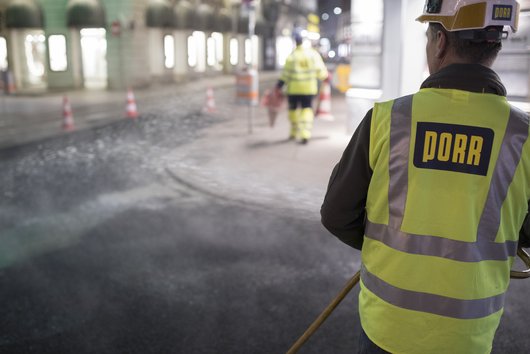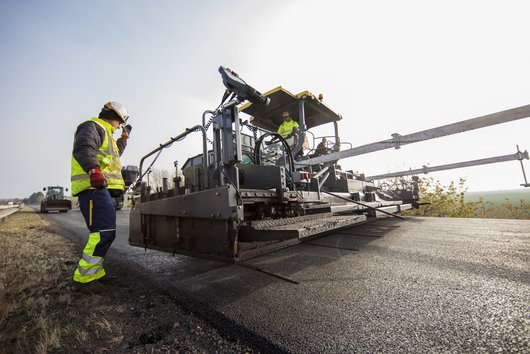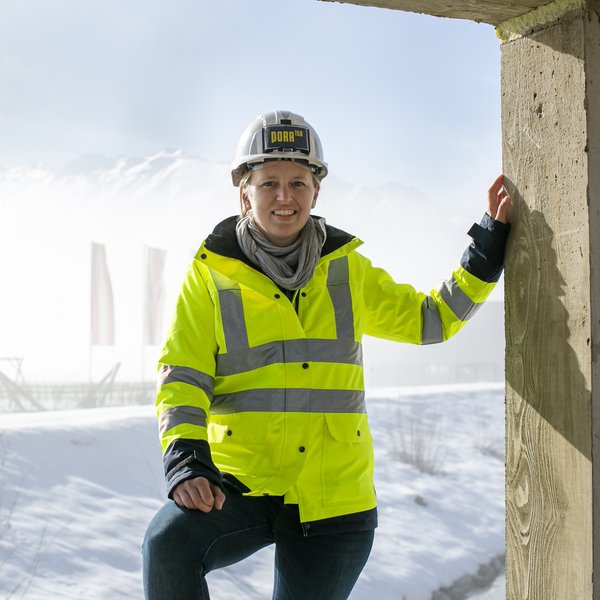
A trailblazer in road construction
If you wanted to drive on every single one of Austria’s roads, you might just as easily circle the equator three times over. Either way, it’s 126,400 kilometres. So just imagine: the long-term maintenance and constant expansion of the interlinked federal, provincial and municipal roads is no mean feat. But from the design to the execution and related logistics – the right approach not only saves important resources and a great deal of time. It also spares the nerves of countless road users. And the right approach just happens to be digital.
Free ride
Digitalisation and the Internet of Things, IoT for short, simplify the logistics at large construction sites and thereby relieve the associated traffic disruptions. Connected, standardised communication interfaces ensure that any changes to plans always reach the right person. Improved communication means that vehicles loaded with asphalt can be managed in such a way that they arrive at the construction site right on schedule. After all, punctual delivery within a strictly defined window is absolutely essential in asphalt road construction. Finally, asphalt can only be laid at a certain temperature. What’s more, the IoT allows data from the construction site surroundings to be recorded, for example from weather services and reported traffic jams, so that the current positioning and vehicle data of the construction machinery can be adjusted and constantly evaluated.


Great success
IoT applications allow datapoints relevant to the construction to be saved centrally so that the complete data is available to everyone involved in the project at all times. They can thereby access the data and respond in real time. This allows dynamic processes to be actively influenced, closely controlled and sustainably optimised.
So, on the one hand IoT makes processes more economical, while also allowing valuable resources to be conserved thanks to aspects like optimised construction logistics. Furthermore, a multitude of factors become easier to manage, which is especially important for public-sector clients as they strive for planning security and cost transparency.s
Smart sites
For many years PORR has been a leader in trailblazing machine-to-machine and big-data solutions in order to gather all logistics-related data via sensors and then make it available to those involved in the project via a gigantic data pool. The goal is automated process control in the spirit of Industry 4.0, that reduces delivery fluctuations and bottlenecks and effectively supports skilled staff in their daily work.


Digital BuildingProcessOptimisation
Since 2018 PORR has been using digital BuildingProcessOptimisation or BPO for short. This facilitates an end-to-end digital process, covering everything from project preparation to execution and follow-up. You can see how BPO works in this video on our YouTube channel.
Did you know ...
- … that American scientist Mark Weiser described sensors and modules seamlessly integrated into their surroundings as far back as 1991 in his essay “The Computer for the 21st Century”?
- … that the intelligent use of sensors makes it possible to monitor and control almost any type of device remotely? This can save on mileage or allow heating systems or even entire buildings to be controlled.
- … that PORR has already realised numerous projects with BPO? After a successful start in Austria and Germany, more than 300 projects have also been realised with BPO in the Czech Republic, Poland and Romania.

![[Translate to Englisch:] (c) UBM Development [Translate to Englisch:] (c) UBM Development](/fileadmin/_processed_/3/9/csm_20190325btpa_mgr_th62_k06_day_prefinal01-2-scaled_864227496b.jpg)
